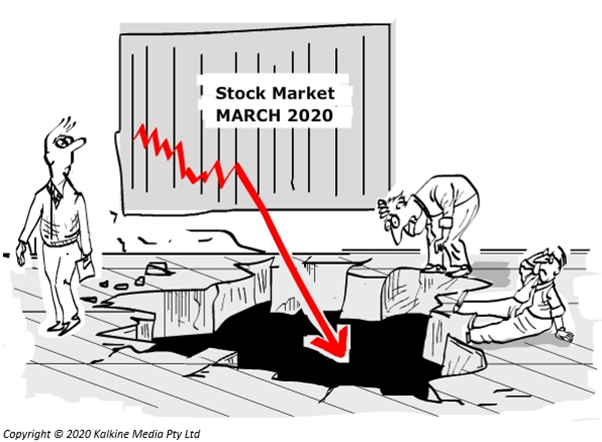Source: 88studio, Shutterstock
Summary
- A bear market is a period of negative returns, pessimistic market sentiment resulting in massive sell-offs. But at the same time, it creates an opportunity to purchase good stocks at a lower price.
- Before making any investment during the bear market, always look into your financial position, risk appetite, and invest more time in doing thorough research for better stocks as per your goals.
The bull market and bear market are a part of the market’s lifecycle cycle. Contrary to the bull market, a bear market can hurt your portfolio, and one cannot assure how long the bear market would continue. Hence it is essential to prepare yourself well and keep your strategies ready when investing in the bear market. Once you are fully prepared, the chances are that you might make money and cut the chances of experiencing financial losses.

Source: © Sbotas | Megapixl.com
What is the bear market?
A bear market is the time frame when the share prices decline sharply for a long duration. The share prices drop by more than 20% in a bear market, and the situation can continue for two months or more. A recent example of such a scenario is the market crash in 2020 due to the COVID-19 pandemic. A bear market is marked by a period of negative returns and pessimistic market sentiment, resulting in massive sell-offs. There are multiple reasons that could lead to huge sell-offs, including natural calamity, financial crisis, economic crisis, market correction and a fall in corporate profits.

In such an environment, nimble investors try and make the most of the situation. When the market is bearish, the stocks of both good and bad stocks tend to fall. While bad stocks tend to stay down and take longer to recover, the good ones bounce back when the market bounces back. In such a situation, the investors look for stocks of profit-making companies. This is so because such stocks are available at a discount. Once the stocks are filtered, with the help of ratios, it is possible to find out the stocks available at a discount - all thanks to the bear market for providing such opportunities.
What should one do when the market is bearish?
Undoubtedly, multiple bear markets can create havoc in one's finances. Individuals experience salary cuts, job losses, or payment delays. Hence, before one plans to invest in the bear market, one should first manage his/her finances to cover the daily expenses for another six months. Once these things are taken care of, and one has a sufficient amount left to invest, an investor can enter the market.
DO READ: How to make money during a share market crash?
Tips for investing in a bear market
Different investors follow different strategies when they feel that the bearish market is about to begin or are already in the bear market. A key thing to note here is that the best approach directly links with the risk tolerance level, investment period and investment goals.
Here, we would look at some of the best practices that investors follow amid a bearish market environment.
Hold the Company's stock you believe in
As highlighted above, even the stocks of the best companies tend to fall in the bear market. In such a situation, many savvy investors do not sell these good companies' stocks unless and until there is an urgent need for money.
Constantly assess your risk tolerance
In case one already has a considerable amount invested in the market, which is in the bearish phase, it can increase one’s heartbeat. One must rethink whether there is any sense of switching to a conservative portfolio, such as including bonds in the portfolio.
Evaluate your investment goal
In case you are investing your hard-earned money for retirement, then making your money ride amid the existing market situation makes sense, mainly when you are sure about the way you have invested. However, in case you need money within five years, then it is critical to think about whether your money should be in less-volatile investments or not.
Do comprehensive research before investing
It is always good to do thorough research before making any investment. However, when the market is bearish, it becomes more important as people tend to narrow their choice of stocks to include in the portfolio. With narrowed down equity choices and the amount to invest, experts recommend people give additional time to assess the Company's management, business outlook and overall financial performance.
Those companies with high growth potential are regarded as favourable opportunities. In a bear market, you might also see some low growth potential stock showing significant growth. Hence, keeping track of stocks is always good where you see a growth prospect in future. It would uncover new equity openings.
Buy Low and Sell high
When the market is bearish, experts recommend buying the stocks as the stock prices fall and sell them when they are high.
Prepare to Buy
A market crash raises the alarm for smart investors to buy stocks at a lower price. These shares are effectively on sale, hence an excellent time to purchase your favourite stocks.
Don't hesitate to take a second opinion
Amid the market crash, if at any point you feel that the market's twirls require a second opinion, it is always better to consult an expert from this area. Nowadays, one can take help from human as well as robo-advisors.
Go For protective put options
Investors looking to maintain a position in the stock market generally adopt a defensive strategy. This strategy involves investing in bigger companies with a robust balance sheet and long operational record. Another way to play defensive is by buying protective put options. Put options give the holder the right but not the obligation to sell the security at a pre-determined price when the contract expires.
Write a Covered Call
In a bearish market, many investors opt for writing a covered call. In case you are writing a call option, you are selling the stock currently owned by you to the buyer at a specific price if the stock rises and reaches the strike price. In exchange, the holder of the call option also gets an option premium.
If the stock price does not reach the strike price during the life of the call option, you would be able to keep the stock along with the income from writing the call option.
ALSO READ: Three investing blunders an investor should avoid

.jpg)


